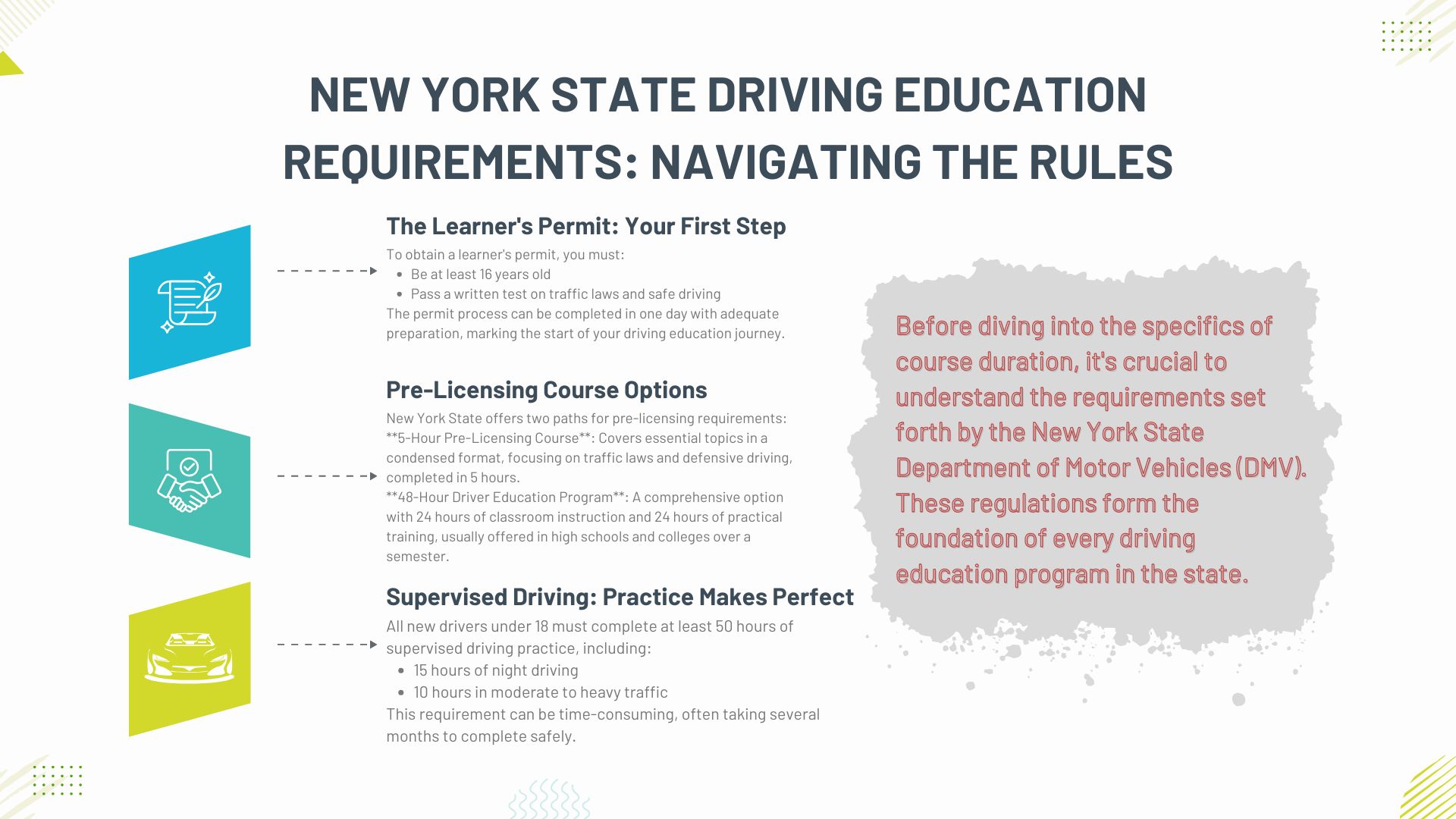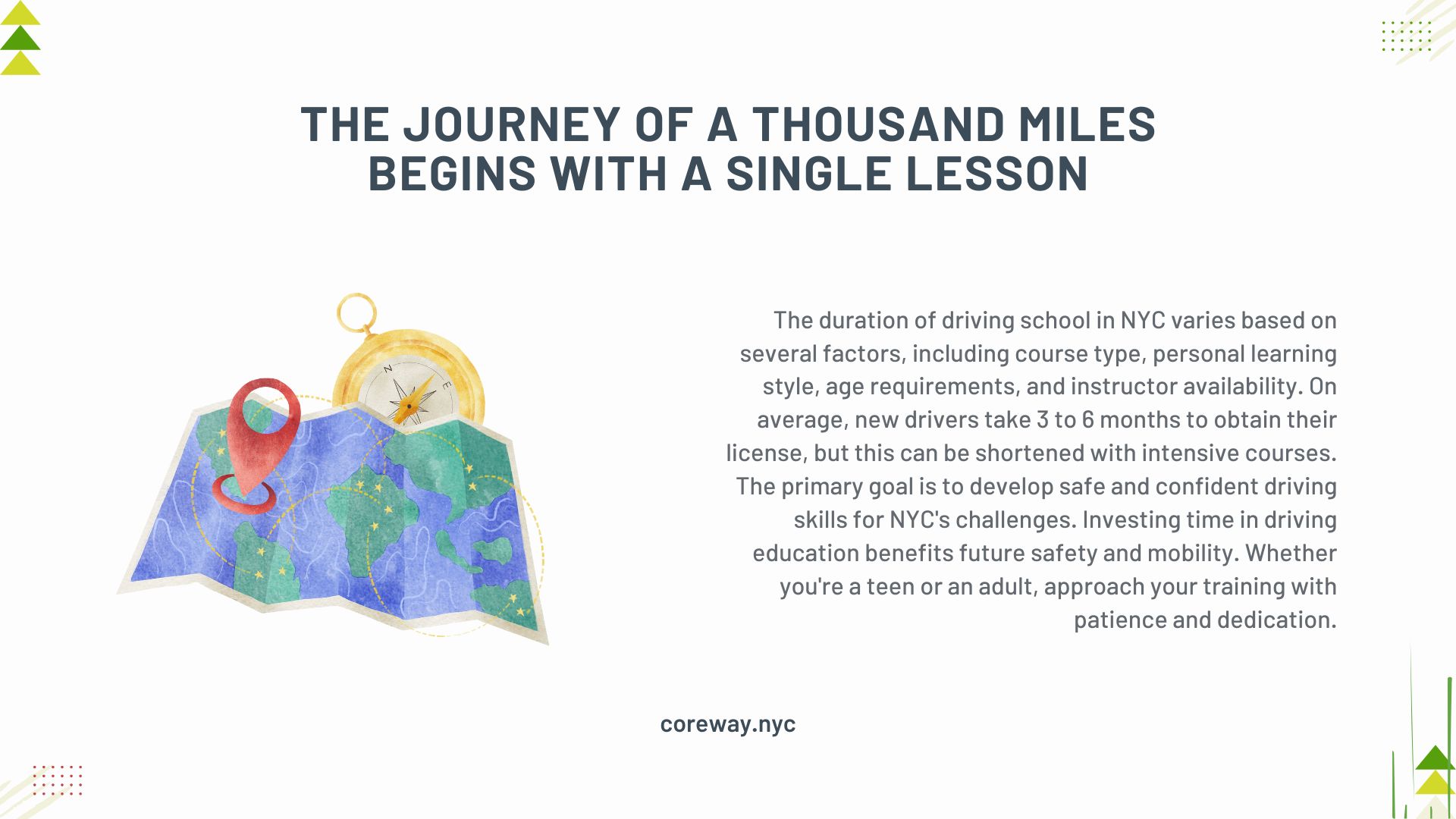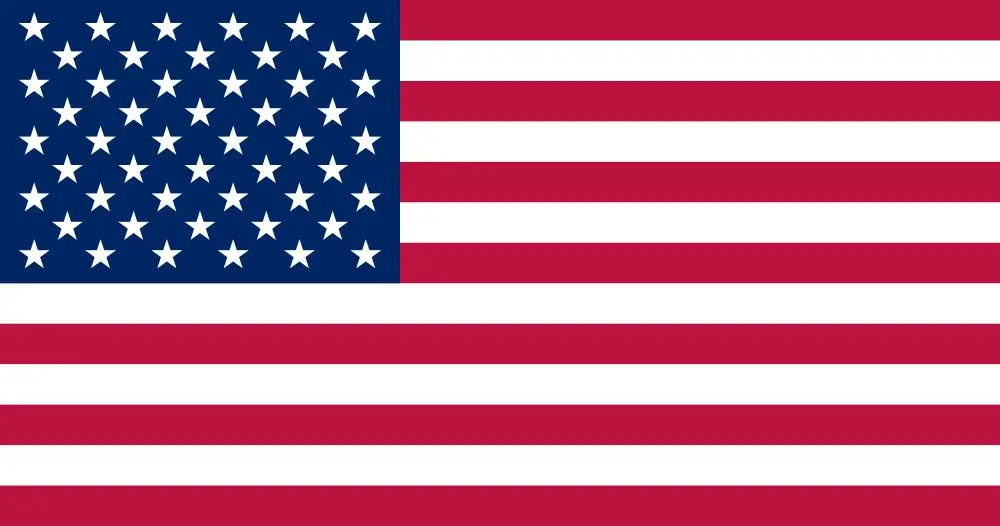How Long Does Driving School Take? A Comprehensive Guide

Table of Contents
- The Road Ahead: Understanding Driving Course Options
- New York State Driving Education Requirements: Navigating the Rules
- Components of Driving Education: Breaking Down the Learning Process
- Factors Affecting the Duration of Driving School
- The Road to Certification: Testing and Licensing Process
- Optimizing Your Driving School Experience: Tips from a NYC Driving Expert
- Beyond the License: Continuing Your Driving Education
- The Journey of a Thousand Miles Begins with a Single Lesson
If you're wondering how long it'll take to go from novice to licensed driver in New York City, you're in the right place. Let's cut to the chase: on average, most new drivers in NYC spend between 3 to 6 months completing driving school and obtaining their license. However, this timeline can vary significantly based on several factors.
Schedule your road test at the Red Hook Driver Testing Location and take the next step toward earning your driver’s license!
For the speed demons out there, intensive courses might get you licensed in as little as 4-6 weeks. On the flip side, if you're juggling a busy schedule or prefer a more relaxed pace, your journey could extend beyond the 6-month mark. But here's the kicker: the duration of driving school isn't just about ticking boxes and logging hours. It's about transforming you into a confident, skilled driver capable of navigating NYC's notoriously challenging streets.
The Road Ahead: Understanding Driving Course Options
When it comes to driving education in New York City, there's no one-size-fits-all approach. The time it takes to complete driving school can vary significantly based on the type of course you choose and your personal circumstances. Let's explore the main options available to aspiring drivers in the city that never sleeps.
Usual Courses: The Steady Path
For many learners, the traditional approach to driving education offers a comfortable pace that allows for gradual skill development. These usual courses typically span several weeks to a few months, providing a balanced mix of classroom instruction and behind-the-wheel training.
In a usual course, you might expect:
- Classroom sessions: 2-3 hours per week
- Behind-the-wheel training: 1-2 hours per week
- Total duration: 6-12 weeks on average
This format allows students to absorb information over time, practice driving skills between lessons, and balance their driving education with other commitments. It's particularly well-suited for high school students or those with busy schedules who prefer a more relaxed learning environment.
Intensive Courses: The Fast Lane
For those looking to accelerate their learning, intensive driving courses offer a condensed curriculum that can be completed in as little as one week. These crash courses are designed for quick learners or individuals with pressing time constraints.
An intensive course might look like this:
- Daily classroom sessions: 4-6 hours
- Daily behind-the-wheel training: 2-3 hours
- Total duration: 5-7 days
While intensive courses can fast-track your path to a license, they require full dedication and can be mentally taxing. It's essential to consider whether this accelerated pace aligns with your learning style and ability to retain information quickly.
Online Drivers Ed: Learning in the Digital Age
In our increasingly digital world, online drivers education has gained popularity, especially in the wake of recent global events. These courses offer unparalleled flexibility, allowing students to learn at their own pace from the comfort of their homes.
Key features of online drivers ed include:
- Self-paced learning modules
- Interactive quizzes and simulations
- 24/7 access to course materials
The duration of online courses can vary widely, typically ranging from 15 to 30 hours of total instruction time. However, because students can progress at their own speed, some may complete the course in just a few days, while others might spread it out over several weeks.
Call Us Today 6AM-10PM
Or fill out the form 24/7
Our team is here to guide you with promotions, instructor availability, and the best training package for you.
New York State Driving Education Requirements: Navigating the Rules

Before diving into the specifics of course duration, it's crucial to understand the requirements set forth by the New York State Department of Motor Vehicles (DMV). These regulations form the foundation of every driving education program in the state.
The Learner's Permit: Your First Step
The journey begins with obtaining a learner's permit. To be eligible, you must:
- Be at least 16 years old
- Pass a written test on traffic laws and safe driving practices
The process of getting your permit can be completed in a single day, provided you've studied adequately for the written test. However, it's just the beginning of your driving education journey.
Pre-Licensing Course Options
New York State offers two primary paths to fulfill pre-licensing requirements:
- 5-Hour Pre-Licensing Course: This condensed option covers essential topics like traffic laws, defensive driving techniques, and the dangers of alcohol and drug use while driving. As the name suggests, it takes just 5 hours to complete.
- 48-Hour Driver Education Program: This comprehensive program, often offered through high schools and colleges, provides a more in-depth education. It includes 24 hours of classroom instruction and 24 hours of practical training, typically spread over a semester.
Supervised Driving: Practice Makes Perfect
Regardless of which pre-licensing course you choose, all new drivers under 18 must complete a minimum of 50 hours of supervised driving practice. This includes:
- 15 hours of night driving
- 10 hours in moderate to heavy traffic conditions
For many learners, accumulating these hours is the most time-consuming part of the process, often taking several months to complete safely and thoroughly.
Components of Driving Education: Breaking Down the Learning Process
Understanding the various components of driving education can help you better gauge the time commitment required. Let's explore each element and how it contributes to your overall learning experience.
Classroom Instruction: Building Your Knowledge Base
Classroom instruction forms the foundation of your driving education. Whether you're attending in-person classes or learning online, this component typically covers:
- Traffic safety principles
- Rules of the road
- Vehicle handling techniques
- Driver behavior and attitude
- Sharing the road with other vehicles and pedestrians
In a traditional setting, classroom instruction for the 5-hour pre-licensing course can be completed in a single day. However, if you're enrolled in the 48-hour driver education program, you'll spend about 24 hours in the classroom, usually spread over several weeks.
Online courses offer more flexibility, allowing you to complete the theoretical portion at your own pace. Most students finish the online curriculum within 1-2 weeks, depending on their schedule and learning speed.
Behind-the-Wheel Training: Putting Theory into Practice
Behind-the-wheel training is where the rubber meets the road, quite literally. This hands-on experience is crucial for developing practical driving skills and building confidence on NYC's busy streets.
The duration of behind-the-wheel training can vary significantly:
- For the 5-hour pre-licensing course, additional driving lessons are optional but recommended. Most new drivers benefit from 10-20 hours of professional instruction.
- The 48-hour driver education program includes 18 hours of actual driving time and 6 hours of observation.
Remember, these hours are in addition to the 50 hours of supervised driving practice required for drivers under 18. Accumulating all these hours typically takes 2-3 months for most learners.
Observation Hours: Learning from the Passenger Seat
Observation hours, where you watch other students drive, are an often-overlooked but valuable component of driving education. The 48-hour program includes 6 hours of observation time, which can provide insights into common mistakes and good driving practices.
Simulations and Range Instruction: Safe Practice Environments
Some driving schools in NYC offer simulator training or practice on closed courses. These controlled environments allow you to experience various driving scenarios without the risks associated with real traffic. While not mandatory, these sessions can significantly enhance your skills and may add a few hours to your total training time.
Factors Affecting the Duration of Driving School
Several factors can influence how long it takes to complete driving school and obtain your license in NYC. Being aware of these can help you plan your learning journey more effectively.
Personal Learning Style and Pace
Every student is unique, and your individual learning style plays a crucial role in determining how quickly you progress. Some learners absorb information rapidly and feel comfortable behind the wheel after just a few lessons. Others may need more time to build confidence and master the necessary skills.
Instructor Availability
In a bustling city like New York, popular driving instructors often have packed schedules. Your ability to book regular lessons can impact the overall duration of your training. During peak seasons (like summer when many teens are out of school), you might face longer wait times between lessons.
Scheduling Flexibility
Your personal schedule and ability to commit time to driving lessons will significantly affect how quickly you can complete your training. Students who can dedicate several hours each week to driving practice typically progress faster than those fitting lessons around busy work or school schedules.
Age and Previous Experience
Learners over 18 have different requirements than younger students. If you're an adult learner with some previous driving experience (perhaps from another country), you might progress more quickly through the curriculum. However, unlearning old habits can sometimes take extra time, so remain patient with the process.
The Road to Certification: Testing and Licensing Process
As you near the end of your driving education journey, you'll face the final hurdles: the written and road tests. Understanding this process can help you prepare effectively and minimize delays in obtaining your license.
Mastering the Written Test
The New York State DMV written test is a crucial step in your journey to becoming a licensed driver. This test assesses your knowledge of traffic laws, road signs, and safe driving practices. Here's what you need to know:
- Test Format: 20 multiple-choice questions
- Passing Score: 14 correct answers (70%)
- Time to Complete: Most test-takers finish within 15-30 minutes
While the test itself is relatively quick, preparation time varies. Most students spend 1-2 weeks studying, often using practice tests to boost their confidence. Remember, thorough preparation can save you time in the long run by helping you pass on your first attempt.
Navigating the Road Test
The road test is where you demonstrate your practical driving skills to a DMV examiner. This crucial step can sometimes be a bottleneck in the licensing process due to scheduling constraints. Here's what to expect:
- Test Duration: Typically 15-20 minutes
- Scheduling Wait Time: 3-5 weeks on average, but can extend to 10 weeks during busy periods
- Key Components: Vehicle safety check, basic maneuvers, following traffic laws, parallel parking
To avoid delays, schedule your road test as soon as you feel prepared. Many NYC driving schools offer road test preparation packages, which can include a final lesson and use of the school's vehicle for the test.
Certificate of Completion: Your Ticket to Freedom
Upon successfully passing both tests, you'll receive your certificate of completion. Processing times vary:
- 5-Hour Pre-Licensing Course: Certificate issued immediately upon course completion
- 48-Hour Driver Education Program: May take 1-2 weeks for processing
Once you have your certificate and pass your road test, you're eligible to receive your probationary license. The physical license typically arrives by mail within 2 weeks.
Optimizing Your Driving School Experience: Tips from a NYC Driving Expert
As an expert in NYC driving education, I've seen countless students navigate this process. Here are some insider tips to help you optimize your experience and potentially reduce the time it takes to get your license:
Choose the Right Course Format
Consider your learning style, schedule, and goals when selecting a course format. While an intensive course might seem faster, it's not suitable for everyone. A traditional course spread over several weeks might actually be more efficient if it aligns better with your learning style.
Efficient Study Habits
Maximize your learning outside of formal instruction:
- Review traffic laws and road signs daily
- Use mobile apps for quick practice sessions during commutes
- Watch instructional driving videos to reinforce concepts
Consistent, short study sessions often yield better results than cramming.
Regular Practice
Nothing beats hands-on experience. If possible, practice driving with a licensed supervisor between formal lessons. This not only helps you accumulate the required 50 hours faster but also reinforces skills learned in driving school.
Leverage Technology
Many NYC driving schools now offer virtual reality simulations or interactive online modules. These tools can provide additional practice opportunities without the need for a physical vehicle, potentially accelerating your learning process.
Consider Weather and Traffic Patterns
In NYC, weather and traffic can significantly impact your learning experience. Winter driving lessons can provide valuable experience in challenging conditions, but may also lead to cancellations. Similarly, learning to navigate rush hour traffic is crucial, but can extend the duration of your lessons. Plan your training schedule with these factors in mind.
Prepare for Your Tests in Advance
Start preparing for your written and road tests early in your training. Many students underestimate the preparation time needed, leading to delays in scheduling their tests. By staying ahead, you can potentially shave weeks off your total licensing time.
By following these expert tips, you can navigate the NYC driving school process more efficiently. Remember, the goal isn't just to get your license quickly, but to become a safe, confident driver capable of handling the unique challenges of New York City traffic.
Beyond the License: Continuing Your Driving Education
Congratulations! You've completed driving school and obtained your license. But in the world of New York City driving, learning never truly stops. Let's explore what comes next and how you can continue to improve your skills and potentially save money.
The Graduated Licensing System
New York employs a graduated licensing system, which means new drivers face certain restrictions:
- For the first 6 months, you can't drive between 9 p.m. and 5 a.m. unless accompanied by a licensed driver over 21.
- You're limited to one passenger under 21 who isn't an immediate family member.
These restrictions are designed to give new drivers time to gain experience in lower-risk situations. After 6 months, these restrictions are lifted, but your journey as a responsible NYC driver is just beginning.
Defensive Driving Courses
Many new drivers choose to take a defensive driving course shortly after obtaining their license. These courses offer several benefits:
- Skill Enhancement: Learn advanced techniques for avoiding accidents and handling emergency situations.
- Insurance Discounts: Many insurance providers offer discounts of up to 10% for completing an approved defensive driving course.
- Point Reduction: You can have up to 4 points removed from your driving record.
Most defensive driving courses take about 6 hours to complete and can be done online or in a classroom setting. While it's an additional time investment, the long-term benefits in terms of safety and potential cost savings make it worthwhile for many NYC drivers.
Advanced Driving Courses
For those looking to take their skills to the next level, advanced driving courses are available. These might include:
- Skid Control: Learn how to handle your vehicle in slippery conditions, a valuable skill for NYC winters.
- Performance Driving: While not necessary for daily commuting, these courses can significantly improve your overall vehicle control and awareness.
- Commercial Driving: If you're considering a career change, courses for commercial driver's licenses (CDL) are available.
These specialized courses vary in duration, from one-day workshops to multi-week programs, allowing you to continue your driving education at your own pace.
Call Us Today 6AM-10PM
Or fill out the form 24/7
Our team is here to guide you with promotions, instructor availability, and the best training package for you.
The Journey of a Thousand Miles Begins with a Single Lesson

So, how long does driving school take in NYC? As we've seen, the answer isn't straightforward. It depends on various factors:
- The type of course you choose (usual, intensive, or online)
- Your personal learning style and dedication
- The specific requirements based on your age
- Scheduling and availability of instructors and tests
On average, most new drivers in NYC spend between 3 to 6 months from starting driving school to obtaining their license. However, this timeline can be shortened with intensive courses or extended if you prefer a more relaxed pace.
Remember, the goal of driving school isn't just to get your license as quickly as possible. It's to transform you into a safe, confident, and responsible driver capable of navigating the unique challenges of New York City streets. The time you invest in your driving education pays dividends in safety and confidence for years to come.
Whether you're a teenager eager to hit the road or an adult finally taking the plunge into the world of driving, approach your driving education with patience and dedication. Every hour spent in the classroom or behind the wheel is an investment in your future mobility and safety.
5 hour classes online Choose from multiple 5 hour classes online with flexible scheduling options to accommodate your personal and professional commitments.
Call Us Today 6AM-10PM
Or fill out the form 24/7
Our team is here to guide you with promotions, instructor availability, and the best training package for you.
Frequently Asked Questions: How Long Does Driving School Take in NYC?
-
How long does it take to get a driver's license in New York City?
The time it takes to get a driver's license in NYC can vary widely depending on several factors. On average, most new drivers spend between 3 to 6 months from starting driving school to obtaining their license. However, this timeline can be shorter with intensive courses or longer if you prefer a more relaxed pace. The process includes obtaining a learner's permit, completing required education, accumulating supervised driving hours, and passing both written and road tests.
-
Can I take driving lessons online in NYC?
Yes, you can take some portions of your driving education online in NYC. The 5-hour pre-licensing course is available in an online format. However, behind-the-wheel training must still be conducted in person. Online options provide flexibility in completing the theoretical portion of your driver education, but practical skills must be developed through actual driving experience.
-
What's the difference between the 5-hour course and the 48-hour program?
The 5-hour pre-licensing course is a condensed program that covers essential driving knowledge and is the minimum requirement for most new drivers. It can be completed in a single day. The 48-hour program, also known as the Driver Education and Traffic Safety course, is more comprehensive. It includes 24 hours of classroom instruction and 24 hours of practical training (18 hours of behind-the-wheel experience and 6 hours of observation). This program is typically spread over several weeks or a semester and is often offered through high schools and colleges.
-
How many driving lessons do I need before taking the road test?
The number of driving lessons needed varies per individual, but most new drivers benefit from at least 10-20 hours of professional instruction. Remember, if you're under 18, New York State requires a minimum of 50 hours of supervised driving practice, including 15 hours of night driving and 10 hours in moderate to heavy traffic. These hours are in addition to your formal lessons.
-
Can I get an insurance discount for completing driving school?
Yes, many insurance providers offer discounts for completing approved driver education courses. The discount can be up to 10% and usually applies to several components of your auto insurance policy. Additionally, completing a defensive driving course after getting your license can lead to further discounts. Always check with your specific insurance provider for details on available discounts.
-
How long does it take to schedule a road test in NYC?
Scheduling a road test in NYC typically involves a wait time of 3-5 weeks. However, during busy periods (especially in summer), this wait time can extend to up to 10 weeks. It's advisable to schedule your road test as soon as you feel prepared to avoid lengthy delays in obtaining your license.
-
Is it faster to take an intensive driving course?
Intensive driving courses can potentially speed up the process of obtaining your license. These courses condense the learning into a shorter period, typically one week. However, while they may be quicker, they're not suitable for everyone. Some learners may find the accelerated pace challenging and may not retain information as effectively as they would in a course spread over a longer period.
-
How long is a driving school certificate valid in New York?
In New York, a Pre-licensing Course Completion Certificate (MV-278) is valid for one year from the date of issue. If your certificate expires before you take your road test, you'll need to retake the pre-licensing course. A Student Certificate of Completion of Driver Education is valid for two years.
-
Can I learn to drive faster if I practice more outside of lessons?
Yes, additional practice outside of formal lessons can significantly speed up your learning process and skill development. This is why New York requires 50 hours of supervised driving for teens. More practice helps reinforce what you've learned in lessons and builds your confidence on the road. However, always ensure you're practicing with a qualified supervisor as per New York State laws.
-
How long does it take to receive my license after passing the road test?
After passing your road test, you'll receive a temporary license document at the test site. Your official photo license will be mailed to you and typically arrives within 2 weeks. During this time, you can use the temporary document for driving purposes.
 English
English Spanish
Spanish 

